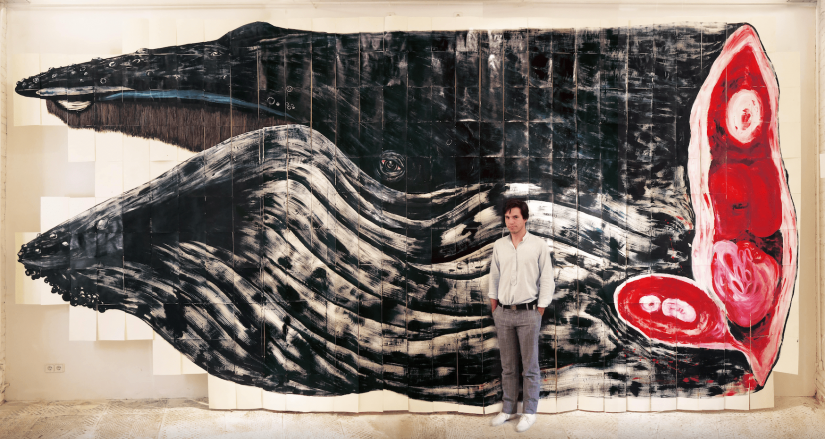Born and raised in Madrid, Spain, Alejandro Cano-Lasso Carretero is currently a student in the Master of Advanced Studies program in Marine Biodiversity and Conservation (MAS MBC), studying marine mammalogy and whale anatomy. Prior to attending Scripps Institution of Oceanography at the University of California San Diego, he completed his undergraduate studies at the Slade School of Fine Arts at the University College of London. Cano-Lasso Carretero currently works under Scripps Oceanography biological oceanographer Anela Choy, and marine biologist Ted Cranford of San Diego State University. He is also collaborating with Scripps biological oceanographers John Hildebrand and Simone Baumann-Pickering.
explorations now: Why did you choose to attend Scripps?
Alejandro Cano-Lasso Carretero: I have always been interested in that particular domain of study in which art and science merge, and I believe knowledge is intrinsically interdisciplinary, so I was very drawn to the institution’s appreciation for interdisciplinary research.
en: What are you researching at Scripps?
ACLC: I am studying baleen whale hearing, and how the morphology and shape of their skull may affect the frequency range they perceive. I am interested in the form that serves the function, and in this respect, there is so much we don’t know about cetaceans. They are secondary marine forms (evolved from land mammals) and their anatomical adaptations to the ocean are fascinating. I am also collaborating with Anela Choy and her lab, illustrating the wonderful biodiversity of the deep sea, as well as the internal anatomy of deep sea fishes and cephalopods, which is understudied.
en: How did you become interested in science and your field of study?
ACLC: I have always been a biologist at heart, fascinated by the macro and micro scale of marine organisms. It was a keen interest in ornithology and entomology that inspired me to begin illustrating; and it was within this illustration practice that an alertness to the natural world really began to deepen—and with it, a profound appreciation. While earning an arts degree in London, I developed and carried out projects that laid the foundation for a series that continues today. This work presents large sea creatures, such as sharks and whales, in their two-dimensional anatomical likeness, fragmented and taken out of their oceanic context. The works engage and provoke human perceptions of physicality, space, and scale, and invite awareness to, in the words of poet and naturalist David Whyte, “the geography of the body and its conversation with the world.” Cetology lends itself well to art.

en: What’s life like as a Scripps student? Describe a typical day.
ACLC: A one-year master’s program is busy. I am taking classes (probably more than I should) and filling the rest of the day with lab and homework. This includes looking at 3-D reconstructions of whale skulls, running computer simulations to understand their function, and drawing in between. Although it isn’t always possible, I like going for long ‘discovery’ walks on the beach. There is always something beautiful. My friends at Scripps have started making fun of me for the amount of ‘dead stuff’ I collect during these walks.
en: What’s the most exciting thing about your work (in the field or in the lab)?
ACLC: To get to look inside the head of a whale, or to regard the iridescent scales and photophores of a deep sea fish through the microscope—it's priceless. If by chance I can find a Radiolarian stuck to a fish scale while looking through the microscope, that takes the cake.
en: Are there any role models or mentors who have helped you along the way?
ACLC: I would say my father has always been my role model. He taught me to draw and showed me the importance of conceptually supporting my artwork. I think it is this conceptual approach to art that prompted me to pursue a degree in science.
en: What are some of the challenges you face as a student?
ACLC: Finding the time to meet friends and enjoying San Diego. Also, finding funding for all the projects that I would like to do. The problem with the kind of work done at Scripps is that the more answers you get, the more questions you have. So, managing time becomes challenging.
en: What are your plans post-Scripps?
ACLC: I would like to continue doing research at an academic institution, possibly starting with a PhD—there is a lot of research that needs to be done. So eventually I would like to work with a university, agency, or institution. I would like to conduct research that could bring art and science closer together. My work as an artist comes from a love and appreciation of the natural world. I want to actively and prudently participate in its conservation, and inspire and help other people to do so.
View Cano-Lasso Carretero’s original works here, and follow him on Instagram @doctorcato.